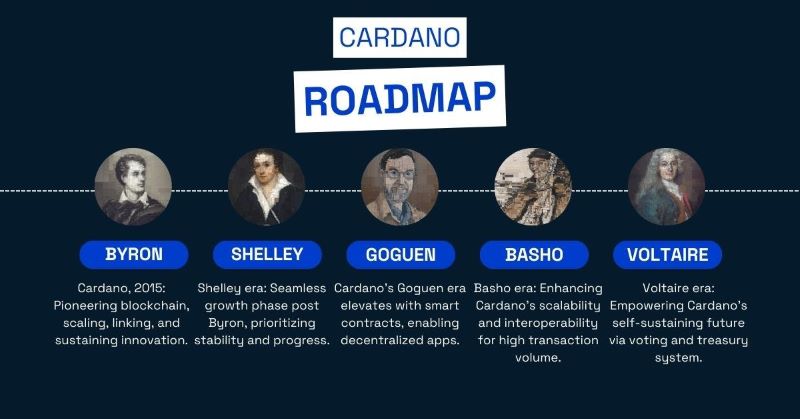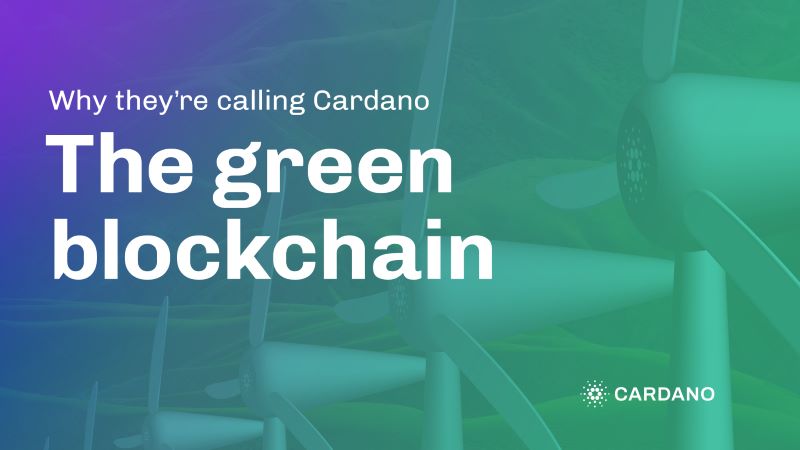
Why Cardano is the “sustainable blockchain
In a world concerned about the environmental impact of technology, Cardano emerges as a beacon of hope. Discover why Cardano is hailed as the sustainable blockchain, leading the charge for a greener future in the crypto space
Introduction
Cardano (ADA) is a third-generation blockchain platform with a focus on sustainability, scalability, and interoperability. Led by Ethereum co-founder Charles Hoskinson, Cardano aims to provide a more balanced and sustainable ecosystem for cryptocurrencies.
Its unique two-layer architecture separates transaction handling from smart contract execution, ensuring both efficiency and security. Cardano’s development is rooted in peer-reviewed academic research, prioritizing high assurance code and a robust foundation for the network’s growth.
Cardano’s native cryptocurrency, ADA, named after pioneering mathematician Ada Lovelace, serves multiple functions within the platform. It is used for transaction fees, participation in the proof-of-stake consensus mechanism, and voting on protocol upgrades. The consensus mechanism, Ouroboros, is designed to be more energy-efficient than earlier proof-of-work systems, aligning with Cardano’s sustainability goals.
Beyond cryptocurrency, Cardano envisions a blockchain platform capable of providing the tools and infrastructure for future economic and social systems. It strives to address the needs of both the unbanked and the developed world by creating a decentralized financial system and enabling secure, scalable transfer of value through complex programmable transactions.
Why Cardano is the “sustainable blockchain”
Cardano stands apart in the blockchain world as a “sustainable blockchain” due to its unique approach. The platform’s energy-efficient Proof-of-Stake consensus mechanism, Ouroboros, drastically reduces energy consumption compared to Bitcoin’s Proof-of-Work system. Additionally, Cardano’s layered architecture allows for efficient upgrades and improvements without compromising the entire network.
The platform’s development is firmly rooted in scientific research and peer review, ensuring a robust and adaptable foundation for future growth. Cardano’s commitment to sustainability extends to its decentralized governance model, Project Catalyst, which empowers ADA holders to participate in decision-making and support eco-friendly initiatives.
Through strategic partnerships and a focus on real-world applications, Cardano is actively contributing to a more sustainable and equitable blockchain ecosystem. This combination of technological innovation, research-driven development, and community-led governance establishes Cardano as a leading example of a sustainable blockchain, poised to shape the future of the industry.
Cardano’s Roadmap to Sustainability
In the rapidly evolving world of blockchain technology, Cardano is emerging as a leader in environmental responsibility. Its comprehensive approach to sustainability, encompassing technological innovation, strategic partnerships, and community-driven initiatives, sets a new standard for the industry.
At the core of Cardano’s sustainable vision lies the energy-efficient Ouroboros protocol. This Proof-of-Stake (PoS) consensus mechanism drastically reduces energy consumption compared to the energy-intensive Proof-of-Work (PoW) systems used by many other blockchains. By eliminating the need for competitive mining, Ouroboros minimizes Cardano’s carbon footprint and lowers transaction costs.

Cardano’s layered architecture, with distinct settlement and computation layers, contributes to its sustainability by allowing for efficient upgrades and adaptability without the need for energy-consuming hard forks. This modularity not only enhances scalability but also ensures a more sustainable growth trajectory.
The platform’s commitment to sustainability extends beyond its technical design. Cardano’s parent company, IOHK, has forged strategic partnerships to further strengthen its environmental credentials. A notable example is the collaboration with the Ethiopian government to deploy a blockchain-based education management system, showcasing the real-world impact of sustainable blockchain solutions in developing nations.
Cardano’s community-driven governance model, through Project Catalyst, empowers ADA holders to actively participate in decision-making and support projects focused on sustainability and social impact. This democratic approach fosters a culture of responsibility and aligns the community’s interests with the long-term well-being of the network.
Furthermore, Cardano’s research-driven ethos, marked by collaboration with academic institutions, ensures that its development is guided by rigorous scientific principles. This minimizes the risk of unforeseen issues and allows for the integration of future advancements in a sustainable manner.
Cardano’s roadmap to sustainability is a testament to its commitment to building a durable and environmentally friendly blockchain. By prioritizing energy efficiency, scalability, community engagement, and research-driven development, Cardano is not merely adapting to the future; it is actively shaping a more sustainable and equitable blockchain ecosystem. This dedication to responsible innovation is poised to attract a growing community of users and developers who share Cardano’s vision for a greener and more inclusive blockchain future.
How Cardano’s ADA is Pioneering the Green Blockchain Movement
As environmental concerns become increasingly pressing, Cardano’s ADA emerges as a beacon of sustainability within the cryptocurrency landscape. Its unique approach to energy consumption and unwavering commitment to eco-friendly practices are setting a new standard for the blockchain industry.
Central to Cardano’s green initiative is Ouroboros, its revolutionary Proof-of-Stake (PoS) consensus mechanism. Unlike Bitcoin’s energy-intensive Proof-of-Work system, Ouroboros dramatically reduces electricity consumption by eliminating the need for competitive mining. This innovative algorithm not only conserves energy but also democratizes the validation process, aligning stakeholders’ interests with the network’s long-term health.
Furthermore, Cardano’s layered architecture, separating transaction processing from smart contract execution, fosters efficiency and adaptability. This allows for seamless upgrades without energy-intensive hard forks, ensuring the network can evolve sustainably over time.
Cardano’s commitment to the environment extends beyond its technical design. The project’s foundation in peer-reviewed research and evidence-based development guarantees a responsible approach to innovation, with every update scrutinized for potential environmental impacts.
Additionally, Cardano’s community-driven governance model, through Project Catalyst, empowers ADA holders to shape the platform’s future, including its sustainability policies. This collaborative approach ensures that environmental considerations are embedded within the Cardano ecosystem.
As the world grapples with the ecological impact of technology, Cardano’s ADA stands as a testament to the possibility of a greener blockchain. Its energy-efficient design, layered architecture, and dedication to research and community governance position it as a leader in the sustainable blockchain movement.
Cardano is more than just a cryptocurrency; it’s a vision for a sustainable future in the digital age. By prioritizing environmental responsibility and demonstrating that a greener blockchain is achievable, Cardano is not only safeguarding our planet but also building a lasting legacy for generations to come.
Explore the future of sustainable blockchain technology with Solution of Blockchain. Learn more about ADA and its innovative approach to a greener, more equitable digital world.






